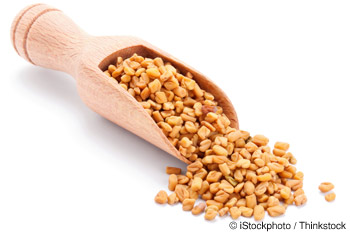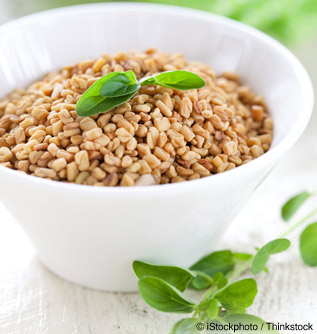Senna (Senna Alexandrina)

Senna Benefits
Senna is a herb that is generally used for its laxative properties. Senna formerly, plants in Cassia (genus)is also known as wild senna, cassia marilandica, or locust plant. It works by interacting with the bacteria in the digestive track, resulting in intestinal contractions. These contractions are caused by the anthraquinone that is contained in senna. These dimeric glycosides anthraquinone derivatives are known as Senna glycosides or sennosides. They are named after their abundant occurrence in these plants of the genus Senna. The main forms of these glycosides are often referred to by: A, B, C & D. Both leaves and pods of the senna plant are used for their laxative effects. The pods are less potent than the leaves.
Senna is found in many tropical countries. The plant has been used in India for thousands of years as a laxative. It can be found in capsule and tablet form, tea bags and loose tea, as well as liquid extracts. The undiluted dried root can be found in health food stores.
How to Use Senna
Senna is generally used by people suffering from constipation. For relief, a person should take ½ teaspoon of the liquid, or one 50 or 100 mg capsule or tablet. After taking the Senna, a bowel movement should occur within six to 12 hours. There is also a tea available, but since Senna has an unpleasant taste naturally, it is good to mix the tea with another flavor of tea.
Senna is the ingredient in the commercial laxative suppository called Senokot. The suppositories are inserted into the rectum for constipation relief.
Many people like to take herbal preparations in the form of a tea. Senna tea comes in teabags and can be found in health food stores, but some people like to use the loose leaves of Senna and brew the tea themselves. Steep the leaves in a pot of boiling water for approximately ten minutes. The leaves can also be put in cold water and steeped for 10 to 12 hours. Using cold water to steep the leaves will leave less resin in the tea, so the chances of abdominal cramping will be reduced. Regardless of the method used, once the tea is ready, strain and drink. When relieving constipation with Senna tea, it will take up to 12 hours to get relief. It is recommended to take before bedtime, so that relief can occur in the morning.
A common preparation is to boil 100 grams of the tea leaves in distilled water with 5 grams of fresh ginger that has been sliced. Cover and steep for 15 minutes, strain, and drink while hot. Make only the amount to drink, as the Senna tea gets stronger if it sits, and can lead to abdominal cramping. Other carminative herbs that mix well with Senna are peppermint and fennel. When sensitive stomachs are an issue, making the tea from the Senna pod rather than the leaves produces a milder tea as the pods are less potent than the leaves.
Senna is a relatively strong laxative, and should be taken in moderation only for the period when a cure is needed. It has been known to be habit forming, so it should not be used daily. If constipation is extreme, medical attention should be sought. Do not continue to use Senna as a way to prevent constipation from occurring.
There are times when Senna should not be taken. People suffering from intestinal blockage, Crohn’s disease, ulcerative colitis, hemorrhoids, or ulcers should not take Senna. Anyone on heart medication of any kind should consult their physician before taking Senna, as is can interfere with the medications and cause irregularities in the heart. Senna should not be taken if taking a diuretic because it can result in an excessive depletion of potassium from the body.
Sometimes diarrhea can occur when taking Senna. Always start with a lesser dose until the body’s response to the effects of Senna is known.

Senna Benefits
Senna is a herb that is generally used for its laxative properties. Senna formerly, plants in Cassia (genus)is also known as wild senna, cassia marilandica, or locust plant. It works by interacting with the bacteria in the digestive track, resulting in intestinal contractions. These contractions are caused by the anthraquinone that is contained in senna. These dimeric glycosides anthraquinone derivatives are known as Senna glycosides or sennosides. They are named after their abundant occurrence in these plants of the genus Senna. The main forms of these glycosides are often referred to by: A, B, C & D. Both leaves and pods of the senna plant are used for their laxative effects. The pods are less potent than the leaves.
Senna is found in many tropical countries. The plant has been used in India for thousands of years as a laxative. It can be found in capsule and tablet form, tea bags and loose tea, as well as liquid extracts. The undiluted dried root can be found in health food stores.
How Does Senna Work?
Senna contains glycosides, which are a group of organic compounds that are commonly found in plants. These compounds work as a laxative by smoothing the muscles as digested food moves through the intestines. This helps to enhance the stool volume and move it out of the colon. The process is caused by the chain of fatty acids that promote digestion, fermentation, and successfully converting the glycosides into a purgative agent.
How to Use Senna 
Senna is generally used by people suffering from constipation. For relief, a person should take ½ teaspoon of the liquid, or one 50 or 100 mg capsule or tablet. After taking the Senna, a bowel movement should occur within six to 12 hours. There is also a tea available, but since Senna has an unpleasant taste naturally, it is good to mix the tea with another flavor of tea.Senna is the ingredient in the commercial laxative suppository called Senokot. The suppositories are inserted into the rectum for constipation relief.
Senna Tea
Many people like to take herbal preparations in the form of a tea. Senna tea comes in teabags and can be found in health food stores, but some people like to use the loose leaves of Senna and brew the tea themselves. Steep the leaves in a pot of boiling water for approximately ten minutes. The leaves can also be put in cold water and steeped for 10 to 12 hours. Using cold water to steep the leaves will leave less resin in the tea, so the chances of abdominal cramping will be reduced. Regardless of the method used, once the tea is ready, strain and drink. When relieving constipation with Senna tea, it will take up to 12 hours to get relief. It is recommended to take before bedtime, so that relief can occur in the morning.
A common preparation is to boil 100 grams of the tea leaves in distilled water with 5 grams of fresh ginger that has been sliced. Cover and steep for 15 minutes, strain, and drink while hot. Make only the amount to drink, as the Senna tea gets stronger if it sits, and can lead to abdominal cramping. Other carminative herbs that mix well with Senna are peppermint and fennel. When sensitive stomachs are an issue, making the tea from the Senna pod rather than the leaves produces a milder tea as the pods are less potent than the leaves.
Senna Herb Notes / Side Effects
When using Senna tea, never drink it for more than seven consecutive days. Also, it should not be used by pregnant women or if the women are nursing. Do not give Senna tea to children under 12 years of age.Senna is a relatively strong laxative, and should be taken in moderation only for the period when a cure is needed. It has been known to be habit forming, so it should not be used daily. If constipation is extreme, medical attention should be sought. Do not continue to use Senna as a way to prevent constipation from occurring.
There are times when Senna should not be taken. People suffering from intestinal blockage, Crohn’s disease, ulcerative colitis, hemorrhoids, or ulcers should not take Senna. Anyone on heart medication of any kind should consult their physician before taking Senna, as is can interfere with the medications and cause irregularities in the heart. Senna should not be taken if taking a diuretic because it can result in an excessive depletion of potassium from the body.
Sometimes diarrhea can occur when taking Senna. Always start with a lesser dose until the body’s response to the effects of Senna is known.

